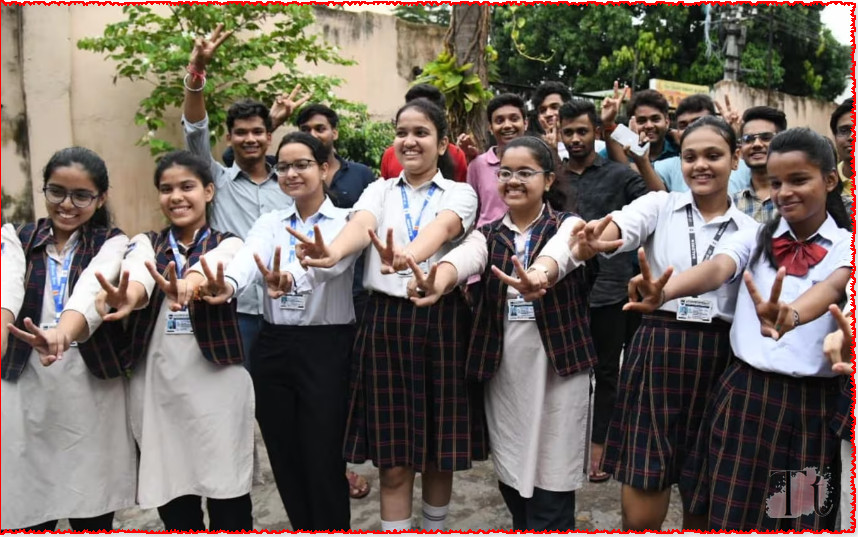Introduction
The Central Board of Secondary Education (CBSE) Class 10 and Class 12 results for the year 2024 have been announced, bringing forth a mix of relief, anticipation, and perhaps some anxiety for students. In this comprehensive analysis, we delve into the details of the results, passing trends over the last five years, the verification process, and various methods to access and interpret the results.
Table of Contents

Understanding the CBSE Results 2024
The CBSE Class 12 results for 2024 were declared on May 13, 2024, while the Class 10 results are anticipated to be released imminently. The examination schedule, spanning from mid-February to early April, has been a subject of discussion, adding to the students’ apprehensions. However, the overall pass percentage for Class 12 stands at 87.98 percent, reflecting a slight increase of 0.65 percent compared to the previous year.
Girls have notably outperformed boys, with a margin of over 6.40 percent points, showcasing their academic prowess. The statistics reveal that out of the 16,33,730 students who registered for the Class 12 exams, 16,21,224 appeared, and 14,26,420 students successfully passed. Additionally, over 24,000 candidates scored above 95 percent, while more than 1.16 lakh students scored above 90 percent, highlighting the dedication and hard work put forth by the students.
In the midst of the announcement, the CBSE has provided multiple avenues for students to access their results, including the official websites – cbseresults.nic.in, results.cbse.nic.in, and cbse.gov.in. Moreover, the integration of technology allows students to retrieve their results through DigiLocker, simplifying the process and ensuring accessibility.
Methods to Access CBSE Results 2024
DigiLocker has emerged as a convenient platform for students to access their CBSE Class 10 and Class 12 results. By following a few simple steps, students can seamlessly navigate through the interface and retrieve their results. Additionally, the option to receive results via SMS provides an alternative for those who prefer mobile communication. Students can send a text message with the appropriate format to the designated number and receive their results promptly.
Moreover, the IVRS (Interactive Voice Response System) facilitates result checking through a phone call, offering another avenue for students to access their results. Each method caters to the diverse preferences and technological literacy of students, ensuring that no one is left behind in the process.
Verification Process for CBSE Results 2024
The CBSE acknowledges the significance of accurate evaluation and offers a verification process for students dissatisfied with their marks. By filling out an online application form on the official website within the specified deadline, students can request a re-evaluation of their answer sheets. This meticulous process aims to rectify any potential errors in totalling, missing marks, or unanswered questions, providing students with clarity and assurance regarding their results.

Passing Criteria and Trends
Understanding the passing criteria is essential for students to gauge their performance accurately. To clear the CBSE board exams, students must secure a grade higher than ‘E’ (at least 33% marks) in all five subjects of the external exams. For practical subjects, a minimum of 33% marks in both theoretical and practical components is required, along with at least 33% marks in aggregate. Notably, the pass certificate is awarded to students who attain a grade above ‘E’ in all subjects of internal assessment, unless exempted.
Analyzing the passing trends over the last five years unveils interesting insights into the performance of students. In Class 10, the pass percentage has exhibited fluctuations, with a notable dip in 2020 followed by a gradual increase in subsequent years. Conversely, Class 12 has showcased a more consistent trend, with fluctuations being less pronounced compared to Class 10. These trends serve as a barometer for assessing the academic landscape and identifying areas of improvement.
The release of the CBSE Class 10 and Class 12 results for 2024 marks a significant milestone in the academic journey of students. The meticulous analysis of the results, coupled with insights into passing trends and the verification process, provides a holistic understanding of the evaluation process. As students eagerly await their results, they can rest assured knowing that multiple avenues are available for accessing and interpreting their performance. Moving forward, these results serve as a catalyst for growth, reflection, and continued pursuit of academic excellence.
Unraveling the Central Board of Secondary Education (CBSE): A Comprehensive Overview
The Central Board of Secondary Education (CBSE) holds a significant position in the Indian education system, governing a vast network of schools both nationally and internationally. Established in 1929, the CBSE has undergone several transformations, evolving into a premier institution responsible for conducting secondary and higher secondary examinations. This comprehensive overview delves into the history, structure, functions, and key initiatives of the CBSE, shedding light on its pivotal role in shaping the educational landscape of India.
History and Evolution
The origins of the CBSE can be traced back to 1929, when it was established as an experiment towards fostering inter-state integration and cooperation in secondary education. Initially known as the Board of High School and Intermediate Education, it underwent constitutional amendments in 1952, leading to its present nomenclature, the Central Board of Secondary Education. Over the years, the CBSE has expanded its reach, affiliating with over 27,000 schools within India and 240 schools across 28 foreign countries.
Structure and Affiliation
The CBSE operates under the purview of the Government of India, with its policies and initiatives aimed at enhancing the quality of education across affiliated schools. These schools, which include Kendriya Vidyalayas, Jawahar Navodaya Vidyalayas, private institutions, and state government schools in Delhi, adhere to the curriculum prescribed by the National Council of Educational Research and Training (NCERT). The current Chairperson, Rahul Singh, IAS, oversees the board’s operations, ensuring adherence to established norms and standards.
Examinations and Initiatives
A cornerstone of the CBSE’s function is the conduct of secondary and higher secondary examinations for Class 10 and Class 12 students, respectively. Held annually in the month of March, these examinations serve as a benchmark for assessing students’ academic proficiency and facilitating their transition to higher education. Additionally, the CBSE has been instrumental in conducting various national-level entrance examinations, including the Joint Entrance Examination (JEE) and the National Eligibility cum Entrance Test (NEET), thereby streamlining the admission process for engineering, medical, and other professional courses.

The introduction of the National Testing Agency (NTA) in 2018 marked a significant milestone in the examination landscape of India. With the transfer of several examinations previously conducted by the CBSE to the NTA, including JEE Main and NEET, the agency has emerged as a premier autonomous body responsible for conducting entrance examinations across the country. This restructuring aims to enhance efficiency, transparency, and accessibility in the examination process, aligning with the government’s vision of promoting meritocracy and equal opportunities in education.
Promotion Criteria and Academic Standards
The CBSE upholds stringent promotion criteria to ensure academic rigor and proficiency among students. For Class 10, students must obtain a minimum of 33% overall in all subjects (or best 5 if 6 subjects are taken), without any minimum theory mark requirement, for promotion to the Senior Secondary level (Class 11-12). Similarly, for Class 12, a minimum of 33% overall, with 33% in both theory and practical examinations (if applicable), is required for promotion to higher education or reappearing in compartment examinations.
These promotion criteria reflect the CBSE’s commitment to maintaining academic standards and fostering holistic development among students. By setting clear benchmarks and providing avenues for improvement, the board plays a pivotal role in shaping the future of millions of students across the country.
Conclusion
The Central Board of Secondary Education (CBSE) stands as a beacon of excellence in the Indian education system, upholding principles of quality, equity, and inclusivity. Through its vast network of affiliated schools, rigorous examination processes, and innovative initiatives, the CBSE continues to nurture talent, foster intellectual growth, and prepare students for the challenges of the 21st century. As it embarks on its journey of evolution and reform, the CBSE remains steadfast in its commitment to empowering generations of learners and shaping a brighter future for India.


1 thought on “CBSE 10th & 12th Results ’24: Comprehensive Analysis”